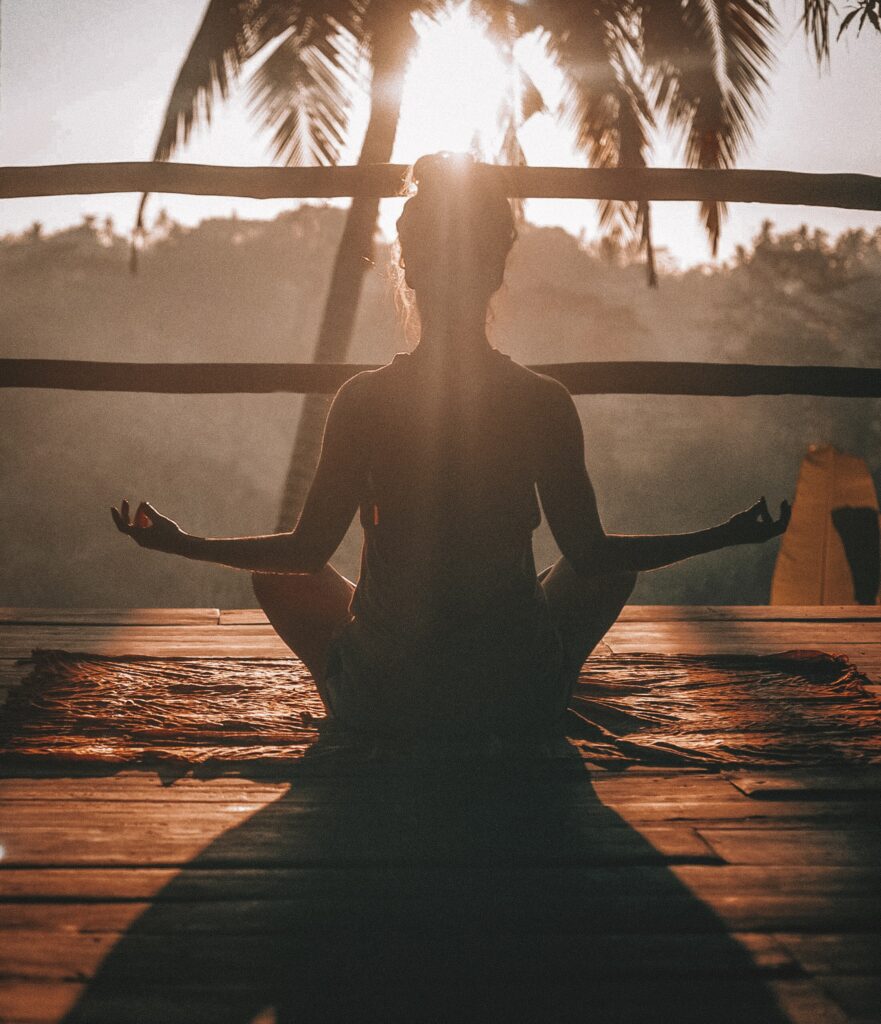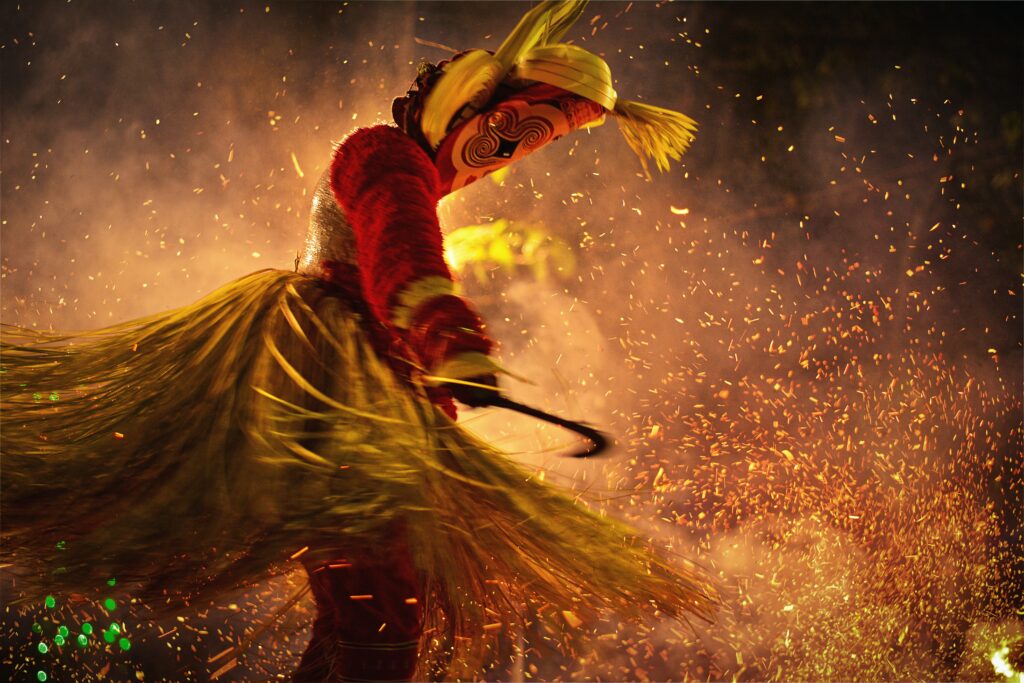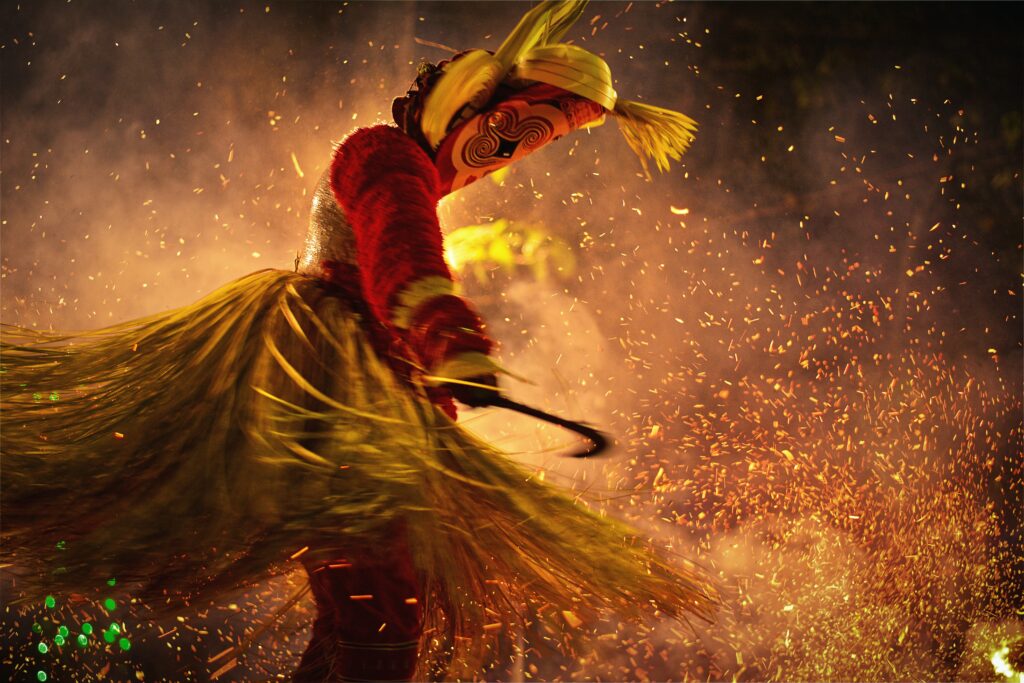In “Dance And Movement As Expression: Connecting Body And Soul,” explore the powerful connection between dance and the human spirit. This article delves into the captivating world of movement and its ability to transcend boundaries and express emotions not easily put into words. Discover how the art of dance can ignite a sense of freedom, liberation, and self-discovery, as it intimately connects the body and soul.

1. The Power of Dance
Dance is a powerful form of expression that has the ability to touch our emotions, invigorate our bodies, and connect us with others. Whether you are a professional dancer or simply enjoy moving to the beat in the comfort of your own home, dance has an undeniable impact on our lives. In this article, we will explore the various aspects of dance and how it influences our mental, emotional, and physical well-being.
1.1 The Emotional Impact of Dance
Dance has the incredible ability to evoke a wide range of emotions within us. Whether it’s the graceful movements of ballet, the energetic beats of hip-hop, or the passionate rhythms of flamenco, dance has the power to stir our souls and tap into our deepest feelings. Through dance, we can express joy, sadness, anger, and love in ways that words alone cannot do justice. It allows us to release pent-up emotions, find solace in the rhythm, and connect with our innermost selves.
1.2 The Physical Benefits of Dance
Apart from its emotional impact, dance also offers numerous physical benefits. Dancing is a fantastic cardio workout that strengthens the heart, improves endurance, and increases overall fitness levels. From the demanding leaps and turns of ballet to the energetic jumps and spins of contemporary dance, the physicality of dance helps to develop strength, flexibility, and coordination. Regular dance practice can also contribute to weight loss, improved posture, and increased bone density.
1.3 Dance as a form of Communication
Through movement, dance allows us to communicate our thoughts, feelings, and experiences without the need for words. It transcends language barriers and cultural differences, enabling people from diverse backgrounds to connect and understand each other on a deeper level. Dance serves as a universal language that unites people in a shared experience, fostering empathy, compassion, and unity. Whether through the intricate hand gestures of Indian classical dance or the vibrant storytelling of African dance, movement becomes a means of expression and connection.
2. Movement as Expression
At its core, dance is a form of expression that goes beyond words. It allows us to communicate and convey messages through the language of the body. In this section, we will delve deeper into the significance of movement as a means of expression and explore how it connects us with ourselves and others.
2.1 Understanding Body Language
Dance is essentially a physical language that speaks volumes without uttering a word. It is a visual medium that can convey emotions, stories, and ideas through the subtle nuances of body language. From the graceful extension of a ballerina’s arm to the sharp, angular movements of contemporary dance, every gesture and movement carries meaning. By becoming attuned to the language of the body, we can better understand the messages being conveyed through dance and appreciate the artistry behind it.
2.2 Connecting with Emotions through Movement
We often hold our emotions within us, struggling to find an outlet for their expression. Dance provides a medium through which we can connect with and express our emotions. Whether it’s the exuberant jumps and leaps of a joyous dance or the slow, fluid movements of a melancholic piece, dance allows us to embody and externalize our feelings. By giving physical form to our emotions, we create a channel for release and healing, allowing us to move through and process our emotional experiences in a powerful and cathartic way.
3. The Mind-Body Connection
The mind-body connection is a fundamental aspect of dance that sets it apart from other forms of physical activity. In this section, we will explore how dance serves as a therapeutic practice and the role of movement in promoting mental health.
3.1 Dance as a Therapeutic Practice
Dance therapy, also known as dance/movement therapy, is a form of psychotherapy that utilizes movement and dance to promote healing and emotional well-being. It is based on the principle that the body and mind are interconnected, and by engaging in movement, we can access and address deep-seated emotions and traumatic experiences. Dance therapy can be highly effective in treating a range of mental health issues, including anxiety, depression, trauma, and eating disorders. Through guided movement, individuals can gain insight, develop coping mechanisms, and experience emotional release in a safe and supportive environment.
3.2 The Role of Movement in Mental Health
Regular engagement in dance and movement has been shown to have numerous benefits for mental health. Physical activity releases endorphins, the body’s natural mood-enhancing chemicals, helping to combat stress, anxiety, and depression. Dance specifically offers a unique combination of physical exertion and creative expression, allowing individuals to channel their energy and emotions in a positive and productive way. The rhythmic and repetitive nature of dance also promotes a sense of mindfulness and presence, reducing feelings of overwhelm and promoting mental clarity and well-being.
4. Cultivating Self-Awareness through Dance
Dance provides a powerful avenue for self-exploration and self-discovery. In this section, we will explore how dance cultivates body awareness, mindfulness, personal identity, confidence, and self-esteem.
4.1 Body Awareness and Mindfulness
In order to dance, one must develop a heightened sense of body awareness. Through dancing, you become more attuned to the movements and capabilities of your body. This increased awareness carries over into other aspects of life, helping you to better understand your physical capabilities and limitations. Additionally, dance encourages mindfulness as it requires your full attention and presence in the moment. By focusing on the movements, the music, and the sensations in your body, you are able to ground yourself and cultivate a greater sense of mindfulness and peace.
4.2 Exploring Personal Identity through Movement
Dance allows individuals to explore and express their personal identity through movement. Whether it’s through the exploration of different dance styles, choreography, or improvisation, individuals can experiment with different facets of their identity and discover new ways of moving and being in the world. Dance provides a safe and creative space to authentically express oneself and embrace one’s uniqueness. As you explore movement and embody different characters or emotions, you gain a deeper understanding of yourself and how you relate to the world around you.
4.3 Building Confidence and Self-Esteem
Engaging in dance can have a profound impact on your confidence and self-esteem. As you learn and master new dance moves and routines, you experience a sense of accomplishment and pride in your abilities. The physicality of dance also helps to improve posture, body image, and self-perception, leading to increased self-confidence. Furthermore, the supportive and collaborative nature of dance communities provides a sense of belonging and acceptance, reinforcing feelings of self-worth and value.

5. Dance as a Cultural Expression
Dance has always been deeply intertwined with culture, serving as a vibrant expression of heritage, tradition, and identity. In this section, we will explore traditional folk dances and contemporary dance as vehicles for cultural expression and the preservation of cultural heritage.
5.1 Traditional Folk Dances
Traditional folk dances have been passed down through generations, representing the customs, beliefs, and stories of a particular culture or community. They are a celebration of history and a means of preserving cultural heritage. These dances often reflect the traditions, rituals, and social dynamics of a specific group of people, and through their performance, these cultural practices are kept alive and shared with future generations.
5.2 Contemporary Dance and Cultural Identity
While traditional folk dances celebrate cultural heritage, contemporary dance offers a platform for exploring cultural identity in a modern and innovative way. Contemporary dance borrows elements from various styles and techniques, enabling individuals and choreographers to create new movement vocabularies and narratives. It provides an avenue for artists to express their unique cultural perspectives, challenge societal norms, and ignite conversations about cultural diversity and representation.
6. Dance as a Ritual and Spiritual Practice
Dance has long been intertwined with spiritual and ritual practices, serving as a means of connecting with the divine and transcending the limitations of everyday existence. In this section, we will explore the role of dance in different religions and its potential as a path to spiritual transcendence.
6.1 Sacred Dance in Different Religions
Many religions incorporate dance as a form of worship and spiritual expression. From the spiritual dances of Native American tribes to the trance-like movements of Sufi whirling dervishes, dance serves as a conduit for connecting with the divine and accessing higher realms of consciousness. These sacred dances often involve repetitive movements, rhythmic patterns, and chanting or music, creating a sacred space for participants to surrender to a higher power and experience a sense of unity and transcendence.
6.2 Dance as a Path to Transcendence
Dance, in its purest form, has the ability to transport us beyond the boundaries of the physical realm and into a state of transcendence. In the flow of movement, we can lose ourselves and merge with the music, the rhythm, and the energy of the dance. Through dance, we can escape the confines of the ego and enter a space of pure presence and connection. It serves as a gateway to experiencing a heightened sense of spirituality and oneness with the universe.
6.3 Connecting with the Divine through Movement
In addition to being a spiritual practice, dance can also provide a means of connecting with the divine within ourselves. When we move our bodies in harmony with the music and the rhythm, we tap into a sacred space within us, where our true essence resides. Through dance, we can experience a deep sense of connection and alignment with our higher selves, opening the door to self-discovery, inner healing, and profound spiritual growth.

7. Dance and Social Bonds
Dance has the power to forge social bonds and foster a sense of community. In this section, we will explore the role of group and partner dancing in building social connections, trust, and social interaction.
7.1 Group Dancing and Community Cohesion
Group dancing brings people together in a shared experience, fostering a sense of unity and community. From traditional line dances to synchronized performances, group dancing allows individuals to connect with others on a collective level. It promotes cooperation, teamwork, and a shared sense of purpose, as dancers move in unison and support each other. Through group dancing, individuals can experience a sense of belonging and forge deep connections with others who share a common passion.
7.2 Partner Dancing and Trust
Partner dancing, such as ballroom or salsa dancing, requires a high level of trust and communication between two individuals. As partners navigate intricate dance steps, spins, and lifts, they must rely on each other for support and guidance. This fosters a sense of trust, cooperation, and mutual respect. Partner dancing allows individuals to develop interpersonal skills, improve communication, and deepen their connection with others. It provides an opportunity for intimate connection and shared vulnerability, strengthening social bonds and building relationships.
7.3 Dance as a Form of Social Interaction
Dance serves as a powerful catalyst for social interaction. Whether it’s at social gatherings, parties, or dance classes, dance provides a natural platform for meeting new people and engaging in meaningful conversations. The shared love of dance creates an instant bond and facilitates connection, even among strangers. Dancing together allows individuals to let go of inhibitions, express themselves freely, and create memorable experiences. It serves as a common language that transcends social barriers and fosters a sense of inclusion and belonging.
8. Freedom of Expression through Dance
Dance has the potential to challenge societal norms, break gender roles, and serve as a platform for activism. In this section, we will explore how dance allows individuals to express themselves freely, challenge stereotypes, and contribute to social change.
8.1 Breaking Societal Norms through Movement
Dance has a long history of challenging societal norms and pushing the boundaries of what is considered acceptable. From the rebellious moves of jazz and hip-hop to the provocative performances of contemporary dance, artists use movement to challenge and subvert cultural and social expectations. Dance provides a space for individuals to express their authentic selves, break free from societal constraints, and pave the way for a more inclusive and accepting society.
8.2 Challenging Gender Roles and Stereotypes
Dance has the unique ability to transcend gender, allowing individuals to express themselves beyond traditional gender roles and stereotypes. Men can participate in traditionally female-dominated styles, and women can explore more masculine movements. Through dance, individuals can challenge and dismantle rigid gender norms, promoting gender equality and empowerment. By showcasing a diverse range of bodies, styles, and expressions, dance creates a more inclusive and accepting environment for all individuals to thrive.
8.3 Dance as a Platform for Activism
Dance has become a powerful tool for activism, enabling individuals and communities to raise awareness and advocate for social and political change. Choreographers and dancers often incorporate themes of social justice, inequality, and human rights into their creations, using movement to shed light on pressing issues and inspire action. By leveraging the universal language of dance, artists can amplify their messages and mobilize communities towards positive change. Dance becomes a platform for activism, igniting conversations, sparking empathy, and challenging the status quo.
9. The Role of Dance in Performance Arts
Dance plays a significant role in the performing arts, whether it’s in theater productions, film, or as a standalone visual art form. In this section, we will explore the relationship between dance and theater, film, and its potential as a visual art form.
9.1 Dance and Theater
Dance intertwines with theater to create elaborate and visually stunning productions. In musical theater, dance is often used to enhance storytelling, convey emotions, and captivate audiences. Choreographed dance sequences add depth and dimension to the narrative, bringing characters and scenes to life through movement. The collaboration between dancers, actors, and musicians creates a multisensory experience that captivates and engages audiences on a profound level.
9.2 Dance and Film
Film provides a unique platform for capturing and showcasing the beauty and power of dance. Choreographed dance sequences in movies can evoke a wide range of emotions, tell stories, and create iconic moments. Dance in film enables audiences to experience movement from different angles, perspectives, and settings, expanding the possibilities of what dance can be. Whether it’s the intricate, gravity-defying routines of “Step Up” or the poetic, ethereal movements in French films, dance adds an extra dimension to the storytelling and makes it more accessible to a broader audience.
9.3 Dance as Visual Art
Beyond performances and film, dance can also be appreciated as a visual art form in and of itself. Through photography and videography, the beauty and artistry of dance can be captured and preserved. Still images freeze the dynamic and fleeting moments of movement, highlighting the form, line, and grace of the dancer. Dance photography and videography allow viewers to appreciate the aesthetics, skill, and emotion inherent in dance, even without witnessing it in person. This merging of movement and visual art creates a unique and immersive experience for the audience.
10. Dance and Personal Transformation
Throughout this article, we have explored the multifaceted nature of dance and its impact on our lives. In this final section, we will delve into how dance can contribute to personal transformation, helping individuals overcome limitations, find inner peace, and embark on a journey of growth and self-discovery.
10.1 Overcoming Physical and Mental Limitations through Dance
Dance has the power to break through physical and mental barriers, allowing individuals to overcome their limitations and reach new heights. Through disciplined training and practice, dancers develop strength, flexibility, and endurance, pushing the boundaries of what their bodies can achieve. In addition to the physical challenges, dance also provides a space for individuals to confront and overcome mental barriers, such as self-doubt, fear, and perfectionism. It fosters resilience, discipline, and perseverance, empowering individuals to surpass their perceived limitations and realize their full potential.
10.2 Finding Joy and Inner Peace through Movement
Dance has an innate ability to bring joy and inner peace to our lives. When we move in sync with the rhythm and music, we tap into a state of flow and release, freeing ourselves from the stresses and worries of daily life. Dance provides a space for individuals to let go, be fully present, and experience moments of bliss and liberation. It offers an avenue for self-expression, self-care, and self-discovery, allowing individuals to reconnect with their inner selves and nourish their souls.
10.3 Dance as a Tool for Growth and Self-Discovery
Dance serves as a powerful tool for personal growth and self-discovery. It provides a space for individuals to explore their creativity, cultivate resilience, and embrace vulnerability. Through dance, we gain a deeper understanding of our bodies, our emotions, and our true selves. It allows us to push beyond our comfort zones, take risks, and learn more about our capabilities. Dance invites us on a journey of self-exploration, self-acceptance, and personal transformation.
In conclusion, dance is a profound and multifaceted form of expression that impacts our emotions, physical well-being, and social connections. It allows us to communicate and connect with others on a deeper level, fostering empathy and unity. Dance serves as a transformative tool for personal growth, enabling us to overcome limitations, embrace our authentic selves, and discover new aspects of our identity. Whether it is used as a therapeutic practice, a cultural expression, or a platform for activism, dance has the power to shape our lives, promote well-being, and connect body and soul. So put on your dancing shoes, let the music move you, and embark on a journey of self-expression and transformation through the power of dance.




